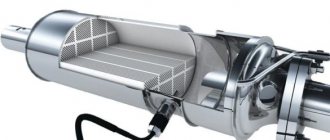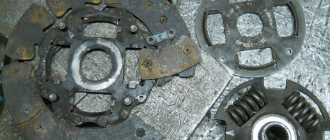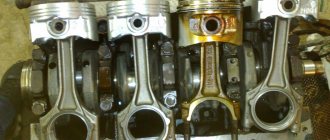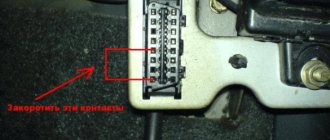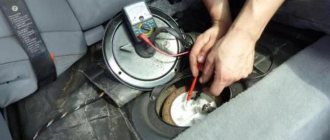Lada Priora is a family of cars from the Volzhsky Automobile Plant, which replaced the Lada 110 family of cars. Priora has been significantly improved and finalized. But, as with most domestically produced cars, problems very often arise with it. One of the most common problems is that the car does not pull.
Whether a car pulls or not depends on many factors, most of which relate to the operation of the power plant. Although there is also a possibility of failure of other mechanisms of the Lada Priora.
If the car breaks down and does not move at all, then you can turn to professionals and call a tow truck, for example, https://volok-evakuator.ru/shaxov.php.
Priora pulls poorly: we study possible causes of power loss
Lada Priora is a family of cars from the Volzhsky Automobile Plant, which replaced the Lada 110 family of cars. Priora has been significantly improved and finalized. But, as with most domestically produced cars, problems very often arise with it. One of the most common problems is that the car does not pull.
Whether a car pulls or not depends on many factors, most of which relate to the operation of the power plant. Although there is also a possibility of failure of other mechanisms of the Lada Priora.
If the car breaks down and does not move at all, then you can turn to professionals and call a tow truck, for example, https://volok-evakuator.ru/shaxov.php.
Important: checking sensors
The answer to the question why the idle speed on a Priora fluctuates can often be this: one of the three sensors (IAC, TPS, MAF) is faulty. It's quite easy to check:
- Start the power plant.
- Disconnect the IAC power supply and analyze: the IAC frequency remains the same or the motor stalls - the sensor needs to be replaced. If the frequency has increased, the sensor is working.
- Restore power to the regulator.
- Remove the chip from the mass air flow sensor and observe: the speed has increased - the mass air flow sensor is working; the engine has stalled - the mass air flow sensor should be replaced.
- Connect power to the TPS.
- Disconnect the block from the mass air flow sensor and analyze: the crankshaft rotation speed has increased - the mass air flow sensor is working, the engine stalls - the throttle position sensor is faulty.
- Attach the chip to the mass air flow sensor.
Loss of traction not related to the engine
If the engine operation does not raise suspicions and the car does not pull, then this indicates a clutch malfunction. Destruction of the clutch plate lining or damage to the springs leads to the fact that the clutch transmits torque from the engine to the gearbox only partially, and clutch slippage occurs.
With such a malfunction, any car, including Priora, pulls very poorly.
It is quite easy to identify this malfunction. When slipping occurs, the driven disk linings overheat greatly and a specific smell appears. The malfunction is eliminated by replacing worn or damaged clutch elements.
Priora drive spins, car doesn't move
- To the beginning of the forum
- Forum Rules
- Old design
- FAQ
- Search
- Users
that if the CV joint had said goodbye, then I would not have been able to get home on the cable.
As I understand it, if the CV joint had said goodbye, I would not have been able to get home on the cable. If the drive had popped out, then in theory the oil should have poured out, but it didn’t. Can you tell me more about the drive differential? Do I have to remove the box to deal with it?
it’s true that my external one was falling apart
essna
What should you do when a grenade is flying, why not on a rope?
Give it a comrade: right from under the hood you could see that the drive is spinning but the car is not moving.
Mmm. I don’t really understand what scratching means. She seemed to dress normally.
Information on icons and features
You can not
start topics You
cannot
reply to messages You
cannot
edit your messages You
cannot
delete your messages You
cannot
vote in polls You
can
attach files You
can
download files
Source
Loss of traction due to power system failure
But still, if a drop in power is noticed and the car pulls poorly, you need to look for the cause in the power unit.
As with most cars, on a Priora, if a malfunction such as loss of power occurs, the check should begin with the engine power system, ignition system and gas distribution mechanism.
Description
| Cause | |
| Poor quality fuel | Such gasoline, having a large amount of impurities and water, causes interruptions in engine operation and loss of power. In order to get rid of the consequences of using low-quality gasoline, you will need to flush the power system. |
| Gasoline pump | .In some cases, when the car drives normally at low speeds, and a drop in power is observed only at higher speeds, this indicates that the performance of the fuel pump is not adequate for these speeds. To eliminate the malfunction, you need to check the condition of the fuel pump, rinse it if necessary and check its performance. |
| Fuel filter | If it is heavily contaminated, its throughput is significantly reduced, and the required amount of fuel does not enter the cylinders. |
| Injectors | If these elements of the power supply system of the power unit malfunction, unstable operation and a drop in power occur. Often the problem of injector malfunction is solved by flushing the power system. |
Diagnostics of fuel pump operation
If all fuel supply mechanisms are working properly, you should check the air supply system: You need to check the condition of the air filter; if it is heavily soiled, it should be replaced.
After checking the filter, you need to pay attention to the performance of the mass air flow sensor and the throttle position sensor.
If they malfunction, they provide the electronic control unit with readings that do not correspond to the driving mode, which leads to a loss of power in the Priora.
If everything is in order with the power system, and the car does not pull, you should check the oxygen concentration sensor in the exhaust gases, also known as a lambda probe. If it malfunctions, the car begins to over-consumption of fuel and loses power.
Dips when pressing the gas pedal? Does the Priora have trouble starting?
Good day, if you are faced with a problem when you press the gas and the revolutions lazily increase and at the same time the car does not start the first time, then read the article. In most cases, the cause of this phenomenon may be a problem in the fuel system. Most likely, your fuel pump strainer is clogged or it’s time to change the fuel filter. In this article, we will take the Priora from the VAZ family as an example, and consider replacing the fuel filter. The fuel filter on a Priora must be replaced every 30,000 kilometers, as recommended by the manufacturer. The filter on the Prior is located under the fuel tank in the rear of the car, between the rear wheels. It is best to replace the filter in an inspection hole or in a suspended state.
To replace, we will need two keys for 12 and 10, as well as a Phillips screwdriver. We will need to decompress, which means removing excess fuel from the system. Remove the rear seat and unscrew the two bolts on the hatch using a Phillips screwdriver.
We unhook the connector from the fuel pump, start the engine and let it run until the fuel in the system runs out.
Loosen the filter fastening with keys 10 and 12. Remove the right pipe from the filter by pressing the latch and moving it to the side. Be sure to take a small container, as about 200-300 grams of gasoline will drain from the detached pipe.
Remove the second pipe by also pressing the latch and moving it to the side. Now you can remove the filter by tilting it down; not a lot of gasoline will drain from it either.
Installation of a new filter occurs in the reverse order. Be sure to install it strictly in the direction of the fuel, just like the old filter was. The filter has a fuel direction arrow, so it needs to be placed in the direction from the gas tank to the intake manifold
When installing the filter, you should also pay attention to the gaskets in the pipes for cracks and breaks.
Now that the filter is installed
We hook up the fuel pump terminal and, turning on the ignition without cranking the starter 2-3 times, pump gasoline into the system. We start the car and look for leaks at the junction of the fuel filter with the pipes. After making sure that there are no leaks, we put the fuel pump hatch cover and the rear seat back.
Loss of traction due to a malfunction of the ignition system
Next, you should check the ignition system of the Lada Priora. The glow plugs are checked first. They must supply a spark to the cylinder at the right moment. If you notice interruptions in the operation of the spark plug, you should also check the ignition coil, which supplies voltage to the faulty spark plug; it is quite possible that the fault lies there.
After checking the spark plugs and coils, you need to pay attention to the crankshaft and camshaft position sensors. Incorrect data from these sensors, which they transmit to the control unit, can cause interruptions in engine performance. If interruptions in the functioning of these sensors are detected, they are replaced.
Low quality fuel
At domestic gas stations, low-quality fuel is by no means uncommon. But even at branded gas stations you can buy low quality gasoline. As a result, the car will be difficult to start. The car will leave the gas station on the remaining old gasoline, and the engine will be warmed up. But after being idle, it will be quite difficult to start the car. There are several types of low-quality gasoline.
Fuel may be dirty: it may contain various deposits. They clog the fuel channels as well as the filters. As a result, the pressure in the fuel rail will be insufficient, and it will be very difficult to start the engine.
Gasoline can also be low octane. Most often, with such fuel, the car may not start when cold even the third time. You will hear the noise the engine is making, you will feel weak thrust, and detonation will occur. Experts do not recommend starting a car on this fuel.
To eliminate the cause, it is enough to drain the bad fuel and then flush the fuel system. Then you need to fill the tank with good gasoline.
Loss of traction due to improper assembly or engine wear
Often the problem of power loss in a power unit is a mismatch between the position of the camshaft mark and the mark on the housing, which causes the engine's valve timing to be disrupted.
First, the alignment of the camshaft marks is checked. If the marks on the camshaft are in the correct position, you should also check the alignment of the marks on the crankshaft. Often a discrepancy in marks occurs precisely on it.
The classic way to start a broken car
Incorrect adjustment of the valve clearances of the gas distribution mechanism can also cause a loss of power from the power plant. If the gaps are incorrectly set, the valve timing is disrupted, which leads to a decrease in the power of the power plant. To eliminate the malfunction, check the valve clearances and, if necessary, make adjustments.
Finally, you should check the compression in the engine cylinders. If the compression rings are severely worn, the compression in the cylinders drops, which leads to a decrease in engine power. The malfunction is eliminated by replacing the rings.
Source
Let's sum it up
Taking into account the above information, it becomes clear that in the case of “mechanics”, most often problems are associated with the clutch. This unit simply slips or does not work correctly, as a result of which torque is not transmitted to the gearbox and the car does not move after engaging the gear. Often the problem is solved by replacing the clutch with a new set.
In such a situation, you need to take the car to a service center, after which specialists will conduct in-depth diagnostics of the automatic transmission, check the operation of the valve body, torque converter, automatic transmission ECU and transmission itself, as well as various electronic components and systems. In some cases, it is enough to replace the sensor or restore the wiring, while in others, expensive repairs of the automatic transmission or gas turbine engine are required.
Reasons for difficulty shifting gears with the engine running. Transmission oil and level in the gearbox, wear of synchronizers and gearbox gears, clutch.
Manual transmission gears (speeds) do not engage after replacing the clutch: main reasons, settings and adjustments. Diagnosis of problems, useful tips.
Gears are difficult to engage or speeds on a manual transmission do not engage: the main causes of the malfunction and possible problems.
The reverse gear does not engage, the reverse gear is engaged every other time: the main reasons for the failure of the reverse gear in manual and automatic transmissions, diagnostics.
Why gears on a manual transmission are difficult to engage: the main reasons for difficulty engaging manual transmission gears. Clutch and transmission failures.
Gears do not engage when hot or it is difficult to engage a gear: the main causes and methods of troubleshooting a manual transmission.
Source
Main reasons
On the Lada there are hydraulic compensators on the valves; they automatically adjust the clearances in the valve mechanism. These devices are sensitive to oil starvation. As a result of a decrease in the level of this substance, fingers knock when accelerating the car. This knocking sound is also produced in the following situations:
Jerking is another common problem that is associated with a short-term spontaneous change in the speed of the engine crankshaft, regardless of the position of the accelerator pedal. In daily use, a whole series of jerks appear. The limiting case of this phenomenon - failures during acceleration of the Lada Priora - is a noticeable delay in the engine's response to pressing the accelerator pedal.
There are several reasons for jerking:
You can determine the reasons why a Lada with an injection engine stalls when accelerating using special diagnostic equipment. In most cases, jerking is caused by insufficient fuel pressure in the corresponding rail, a malfunction of the mass air flow sensor or the throttle position sensor.
Content
- Reason 1 – spark plugs
- Reason 2 - ignition coils
- Reason 3 – injectors or throttle body
- Reason 4 – fuel filter
- Reason 5 – mass air flow sensor or ECU firmware
- What to do to prevent the Priora from jerking
“Help, my Priora car is shaking while driving. What to do? What could be the problem?" – a car enthusiast wrote on one of the forums. This problem often occurs in domestic cars, and there may be several reasons for its occurrence. Let's figure out why the Priora twitches, how to solve the problem and how much it costs.
Jerks when moving
The moment the car starts moving, most often there is a failure. Unpleasant sensations are associated with a delay in the engine's response to pressing the accelerator pedal. In some cases, the engine stalls. A jerk occurs when the throttle valve opens, when, based on a signal from its position sensor, the ECU determines the moment of transition from cold mode to load mode. This is aimed at increasing the amount of fuel supplied through the injectors. Due to insufficient pressure in the fuel line, there is not enough fuel to move the Lada Priora smoothly.
For this reason, the car stalls when accelerating. In this case, the electronic control unit of the engine, having received a message from the throttle position sensor about the intensive opening of the damper at a large angle, strives to increase the fuel supply as much as possible. This is impossible to do due to low fuel pressure.
The car does not move when the gear is engaged: manual and automatic
When operating vehicles with different types of transmission (manual transmission, automatic transmission), the owner may encounter the fact that the car does not move when the gear is engaged. Mechanics, like automatic transmissions, can fail; the car does not move, although the gear is engaged.
As a rule, if the gears are engaged, but the car does not move, the main reason for the manual transmission is the clutch. In the case of an automatic transmission, there are more reasons; problems with the torque converter (the device also functions as a clutch), problems with the control electronics, or breakdowns of the box itself can be identified. Let's figure it out.
Signs of engine tripping
Regardless of the reasons, engine tripping is associated with the presence of various problems, which can be solved after finding out what caused the stoppage of one of the cylinders of the internal combustion engine.
The main signs of engine tripping include
Signs
Auto mechanics identify several reasons why jerking occurs and the engine begins to stall. The main ones are: incorrect ignition timing, faulty spark plugs and installed condenser, broken piston rings, piston and valve burnout, rocker wear, clogged air filter, and others.
The cause of the jerking must be sought in the cylinders
To reduce the search for the cause of engine tripping, it is recommended to determine which cylinders are not working correctly or have stopped functioning. To do this, you will need to remove the high-voltage wire from the spark plugs one by one. This procedure must be performed carefully, as there is a risk of electric shock. Before performing this work, you will need to place a dielectric base in the form of rubber or wood under your feet. It is recommended to remove by the wire. Then the engine speed increases to 1500 rpm. The valves are removed from the cylinders one by one. If the sound of the vehicle changes when removed, then the cylinder is working correctly. Otherwise, it must be replaced.
Gear engaged: car does not move
So, quite often owners turn to transmission repair specialists with the problem “I turn the gear on, but the car doesn’t move.” In fact, the engine starts and idles normally, then the driver engages a gear and tries to start moving, but when the gear is engaged, the car does not move. Also, often when you try to add gas, the car engine simply stalls.
- Let's start with the manual transmission. First of all, you need to pay attention to whether there are jerks when releasing the clutch pedal. If this is the case, that is, the car jerks when trying to move when the clutch pedal is not fully released, and then the engine stalls after the clutch is fully released, you need to start with the simplest problems.
In order for the pads to “unstick”, you can try to move sharply by releasing the clutch pedal and adding gas. This helps break frozen pads. You can also warm up the mechanism with hot water by pouring water over the place where the pads are installed.
If freezing of the pads is excluded, then the brakes may jam as a result of malfunctions of the handbrake, in case of problems with the brake cylinders (the brakes jam), etc.
If the pads are in good condition and the brakes are working normally, you need to check the quality of the gear shift mechanism. A sign of problems with engaging first gear may be that after releasing the clutch the engine does not stall, but continues to run.
- It happens that the gearshift lever moves, but the gears simply do not engage. In this case, there is a high probability that the cable from the rocker to the gearshift lever has broken. In such a situation, instead of first, you can try to engage second gear or reverse, and then try to move away. If movement is impossible, the car needs to get to the repair site under its own power.
In the case when the gears are engaged normally, but the car does not move, the main reason is often a clutch failure. As a rule, if the clutch discs are “burnt” or the release bearing does not work normally, the clutch will be constantly disengaged. This leads to the fact that there is no connection with the engine and gearbox, torque is not transmitted to the gearbox, and the car does not move.
We also add that often the car cannot move if there are problems with the throttle or the car is equipped with an electronic accelerator pedal. In the first case, the throttle assembly must be inspected for damage, broken gas pedal cable, etc.
The electronic gas pedal does not have a direct connection with the throttle valve. This means that if the engine does not respond to pressing the gas pedal, the cause of the problem lies in the gas pedal position sensor, throttle position sensor, etc. On site, you can try to wash the throttle with carburetor cleaner, as dirt and carbon deposits interfere with the operation of the system.
Finally, we note that the car may not move and stall if the engine is “strangled” by a clogged catalyst. A decrease in the throughput of the catalytic converter leads to the fact that the engine can idle, but “chokes” after pressing the gas pedal, does not develop power, etc.
Inspection of high voltage wire
Often, the Priora stalls when accelerating due to a malfunction of the ignition system. This is especially true for the condition of the high-voltage wire leading to the spark plug. To inspect it, you will need to remove the tip attached to the spark plug. The structure of a high-voltage wire is as follows: the winding contains the central core of the wire. The tip, which is put on the candle, has a persistent metal penny. The main purpose of this element is to transmit current to the spark plug.
The core of the high-voltage wire should fit as closely as possible to the “penny” of the steel tip placed on the spark plug. Due to aging, contact between this element and the wire may be lost due to oxidation of the metal. As a result, tripling occurs. The oxidation of the contact is checked as follows: with the second probe of the multimeter, you should touch the central core of the high-voltage wire; if the core of the high-voltage wire burns out along its entire length, then it is possible to identify such a section using a special multimeter tip.
The wire is pierced until the affected area is identified every 5-10 mm. If such a section is detected, it is cut off if the length of the high-voltage wire allows it. Otherwise, it needs to be replaced.
Priora drive spins, car doesn't move
- To the beginning of the forum
- Forum Rules
- Old design
- FAQ
- Search
- Users
that if the CV joint had said goodbye, then I would not have been able to get home on the cable.
As I understand it, if the CV joint had said goodbye, I would not have been able to get home on the cable. If the drive had popped out, then in theory the oil should have poured out, but it didn’t. Can you tell me more about the drive differential? Do I have to remove the box to deal with it?
it’s true that my external one was falling apart
essna
What should you do when a grenade is flying, why not on a rope?
Replacing spark plugs yourself
Since faulty spark plugs occur most often during acceleration failures, auto mechanics recommend Lada Priora owners learn how to change this element of the ignition system themselves. This should be done after the car has traveled 20 thousand km. However, if the engine starts to trip, the spark plugs should be replaced before this date:
To ensure stable engine operation, spark plugs should be replaced regularly.
Source
Lean mixture
The fuel mixture may be too lean to gain power.
There are several ways to quickly fix this problem.
- Unwanted air leak. May occur due to loosening of the carburetor fastenings or wear of the gasket. If there is a suspicion of this malfunction, then you can confirm or refute this using soap foam . The joints are smeared, then the presence of a void or depression in the place of “leak” is checked.
- Freezing of condensate in the power system. This leads to blockage of passage channels. It can be solved by blowing the channels with a conventional compressor or pump. It is also necessary to check and blow out the jets. If blowing does not help, then cleaning with thin copper wire is allowed.
- The fuel pump may be clogged. It is also necessary to check the wear of its lever . Non-working parts are also cleaned or replaced. Particular attention should be paid to air holes.
- Damage to the fuel pump diaphragm can cause the engine to fail to rev. Along with this, it is necessary to check the strainer and the functionality of the pump valves. Flushing or installing new pump elements will help.
Reason 4 – fuel filter
This is perhaps one of the most common reasons why the Lada Priora twitches.
Like any other filter, the fuel filter becomes clogged over time. The reason is low-quality fuel and dusty air, so it is better to refuel at proven gas stations.
You can check a clogged filter yourself using a conventional pressure gauge, tube and clamp. For this:
At a service center, a pressure check service will cost about 300 rubles.
You can replace the fuel filter at home. The part costs about 300 rubles. If there is no desire or opportunity, contact the service center. There they will charge from 500 rubles for the service.
Conclusion
Many car enthusiasts do not know the reasons for the high idle speed effect, much less how to eliminate it. So, of course, experts and car mechanics recommend contacting a car service straight away, but our man won’t stop until he tries it himself.
There are many reasons for the effect of increased speed, from faulty sensors to errors in the electronic control unit. You can also fix the problem at home, which is what owners of VAZs and other domestic cars do. But owners of foreign cars will have to contact a car service center, where repairs can amount to a considerable amount.
Reason 5 – mass air flow sensor or ECU firmware
A malfunction of the mass air flow sensor on a Priora leads to the control unit receiving incorrect data on the amount of incoming air, as a result of which the air-fuel mixture is not prepared correctly, and the car may begin to twitch. The malfunction is determined using diagnostics at a service center.
The price of the sensor is not at all budgetary for a Priora - about 4,000 rubles. You can change it yourself. To do this, first disconnect the negative battery terminal, then the wire connector and unscrew the pipe clamp. After this, use a wrench to unscrew the two screws securing the air filter housing and carefully remove the sensor.
Inappropriate ECU firmware leads to the same symptoms. The air-fuel mixture is not prepared correctly, and interruptions may occur during engine operation. This can be caused by improper chip tuning or a malfunction of the “brains” themselves. In any case, only competent diagnosis will help here. It usually costs about 500 rubles. After diagnosis, the technician will tell you exactly how to solve the problem.
How to behave and what to do
If you have never touched anything in the engine and are desperately afraid to do it, then the easiest way out will still be a trip to the service center, where the mechanics will “find” a dozen reasons to rip off a good chunk of your spare money. However, if you have a basic desire, you can do everything yourself, thereby saving your hard-earned money.
- Check the speed adjustment screw and simply tighten it if necessary. This way you will close the hole through which the air escapes.
- Using regular pliers, pinch the fuel pipes one by one. This way you can determine which one has a crack or even a hole.
- Check the crankcase vent valve for opening/closing. It is quite possible that it also does not work stably.
- Be sure to look at the operation of the throttle valve. If it doesn't open on time or doesn't close on time, then naturally the problem is here.
- Finally, having not found a single violation in the first four points, you can be sure that the cause of the floating speed was the “lying” on-board computer, that is, the “brains” of the car and the error can be eliminated either by having a special tester on hand, or after all by visiting a repair shop, where the error will be removed.
Recommendations
Comments 44
Good day, tell me how you solved this problem, it’s the same garbage, I’ve already changed everything except the pump
Good Yes, apparently this was not a problem, but a nit-picking. In general, you need to look at the diagnostics, measure the pressure in the ramp, change the mesh in the tank.
If you claim that the coils are normal, the spark plugs are normal, either the forces are dying or the sealing rings are lying down and drawing air
I changed the rings last year. As for the forces - well, they flow at xx 3.4 ms, above the diagnostic tolerances. Who knows. I cleaned it with Vince, then poured laurel into the tank. But then again, that was a year ago. I change the filter according to the regulations, I have already changed the mesh in the tank 2 times, within 30k of mileage. Gasoline at Gazprom in some places. I just noticed the difference between a cold and hot engine. Although the car drives the same as it was. But for some reason I really noticed it. I don't think these are rings.
Look at the pressure of the pump, look at the forces, honestly, I think the flushing is nonsense, I watched how they wash, just like they were applied, and they remain the only thing a little better, I bought new ones, they put out perfect fog. Change the fuel filter, you describe that you have the same thing, in general, I’m describing to you what I did, because the diagnostics are all fine, they tell me why did you come, well, I started looking for problems myself, I looked for suction valves, the knocking of the hydraulics also failed in operation is huge, because the valves do not work fully + the knock sensor turns on emergency mode, in terms of throttle heating you can remove it for the summer, but provided that there is little rain, the air is not humid, otherwise other problems will appear, buy a bk staff, here you have it They won’t tell you the same diagnostics anymore, there are smart ones, if it doesn’t seem like they are looking for a problem, well, God forbid they find them. Throw out the exhaust and have it flashed, yes it will be a plane, no talk, I felt the consumption has decreased and it goes well from the bottom.
My pump is relatively new, I changed it a year ago, this is certainly not a panacea, but I would like to think that it is not the case. There’s probably no point in removing the heating, it’s cold, and winter will begin in a month. Another thing is that after warming up, the speed at хх changes a little in the region of 840-920, and рх changes the pitch all the time, but within small limits.
This is a video on the self-tensioning timing belt, the speed jumps depending on the advance angle, that is, on the Prior this is normal
it gets dull when accelerating from 2500 to 3000 thousand, as if someone is holding it, then the 16kL Priora drives normally, 8 years old, when cold everything is fine up to 70 degrees, I already wrote a post on this topic, so I cleaned the catalyst and it still gets dull)

